Drill bits are an essential tool for any DIY enthusiast or professional. However, over time, they can become dull and lose their efficiency. Sharpening your drill bits can help you save money and time by extending the life of your bits and improving their performance. One important aspect of sharpening drill bits is understanding the drill bit sharpening angle chart.

The drill bit sharpening angle chart provides you with the recommended angles for sharpening different types of drill bits. The angle of a drill bit refers to the angle between the cutting edge and the axis of the bit. This angle is crucial to the performance of your drill bit as it affects the drilling speed, accuracy, and the amount of force needed to drill through a material. By sharpening your drill bits to the correct angle, you can improve their cutting ability and reduce the risk of breakage.
Key Takeaways
- Understanding the importance of sharpening your drill bits can help you save money and time.
- The drill bit sharpening angle chart provides recommended angles for sharpening different types of drill bits.
- Sharpening your drill bits to the correct angle can improve their cutting ability and reduce the risk of breakage.
Understanding Drill Bits
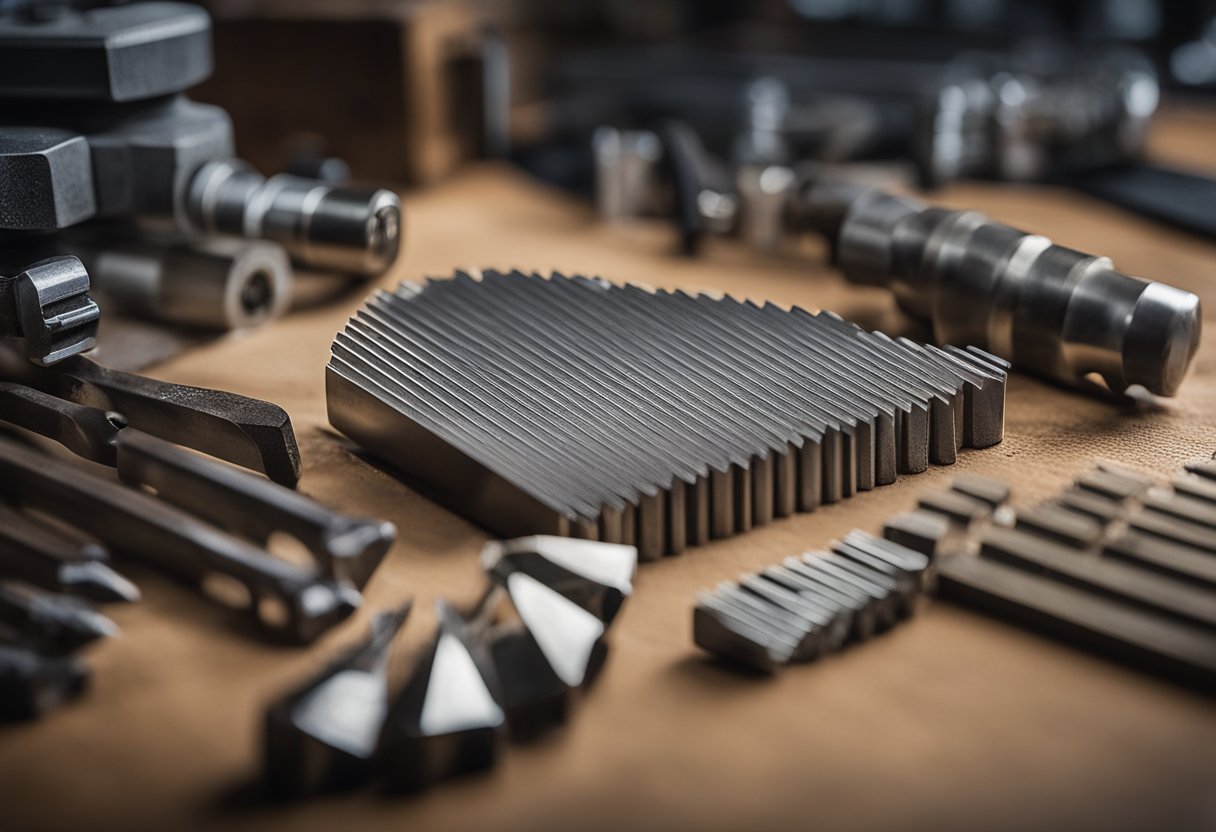
As someone who has used drill bits extensively, I understand the importance of a sharp, well-maintained drill bit. A drill bit is a cutting tool that is used to create holes in various materials such as wood, metal, and concrete. It consists of a shank, a body, and a point. The point is the most crucial part of the drill bit, as it is responsible for creating the hole.
The cutting edge of the drill bit is the part that comes into contact with the material being drilled. It consists of two cutting surfaces called the cutting lips. The web is the area between the two cutting lips, and the chisel edge is the point where the two cutting lips meet. The length of the cutting edge is determined by the length of the flute, which is the spiral groove that runs along the length of the drill bit.
The drill point angle is the angle between the two cutting lips at the tip of the drill bit. The most common drill point angle is 118 degrees, which is suitable for drilling into a wide range of materials, including wood, plastic, and soft metals. Other drill point angles, such as 135 degrees, are suitable for harder materials like stainless steel.
Drill bit diameters can vary widely, from tiny drill bits used for jewelry making to large bits used for drilling into concrete. It is important to choose the right diameter for the job at hand, as using a bit that is too small or too large can result in a poor quality hole or damage to the material being drilled.
In summary, understanding the various components of a drill bit and their functions is crucial in maintaining and using drill bits effectively. By selecting the appropriate drill bit diameter and point angle for the material being drilled, and ensuring that the cutting edges are sharp, you can achieve precise and efficient drilling results.
Importance of Sharpening Drill Bits
As a DIY enthusiast or professional, it is essential to understand the importance of sharpening drill bits. A sharp drill bit can save you time and money, as it can drill through materials faster and more efficiently. On the other hand, a dull drill bit can damage your workpiece, cause frustration, and waste your time.
Sharpening drill bits can also extend their lifespan. Over time, drill bits become dull due to wear and tear. By sharpening them, you can remove the dullness and restore their sharpness. This means that you won’t have to replace them as often, saving you money in the long run.
It’s crucial to inspect your drill bits regularly to check for signs of dullness or damage. Dull drill bits can cause overheating and can damage the workpiece. By inspecting your drill bits, you can catch issues early and sharpen them before they cause any damage.
Sharpening drill bits can seem intimidating, but it’s a simple process that can be done quickly with the right tools. By using a drill bit angle chart, you can ensure that you are sharpening the drill bit at the correct angle for the material you are drilling. This will ensure that your drill bit is sharp and ready to use when you need it.
In summary, sharpening drill bits is an essential part of any DIY project or professional work. It can save you time and money, extend the life of your drill bits, and ensure that your workpiece is not damaged. By inspecting your drill bits regularly and using a drill bit angle chart, you can ensure that your drill bits are always sharp and ready to use.
Sharpening Techniques
When it comes to sharpening a drill bit, there are a few techniques that can be used. One of the most important things to keep in mind is to always maintain the correct angle of the bit. This can be achieved by using an angle gauge or a sharpening jig.
To begin the process, position the bit parallel to the grinding wheel and make sure it is securely clamped in place. Then, using the angle gauge or sharpening jig, set the angle of the bit to the correct degree. It is important to ensure that the angle is the same on both sides of the bit.
Once the angle is set, begin sharpening the first side of the bit by moving it back and forth across the grinding wheel. Be sure to maintain the angle and apply even pressure. After a few passes, check the bit to see if it is sharp. If not, continue sharpening until it is.
Next, flip the bit over and sharpen the opposite side using the same technique. Again, be sure to maintain the correct angle and apply even pressure. After a few passes, check the bit to see if it is sharp. If it is not, continue sharpening until it is.
By following these techniques, you can ensure that your drill bits are always sharp and ready to use. Remember to always take your time and be patient when sharpening your bits, as rushing the process can result in a poorly sharpened bit.
Tools for Sharpening
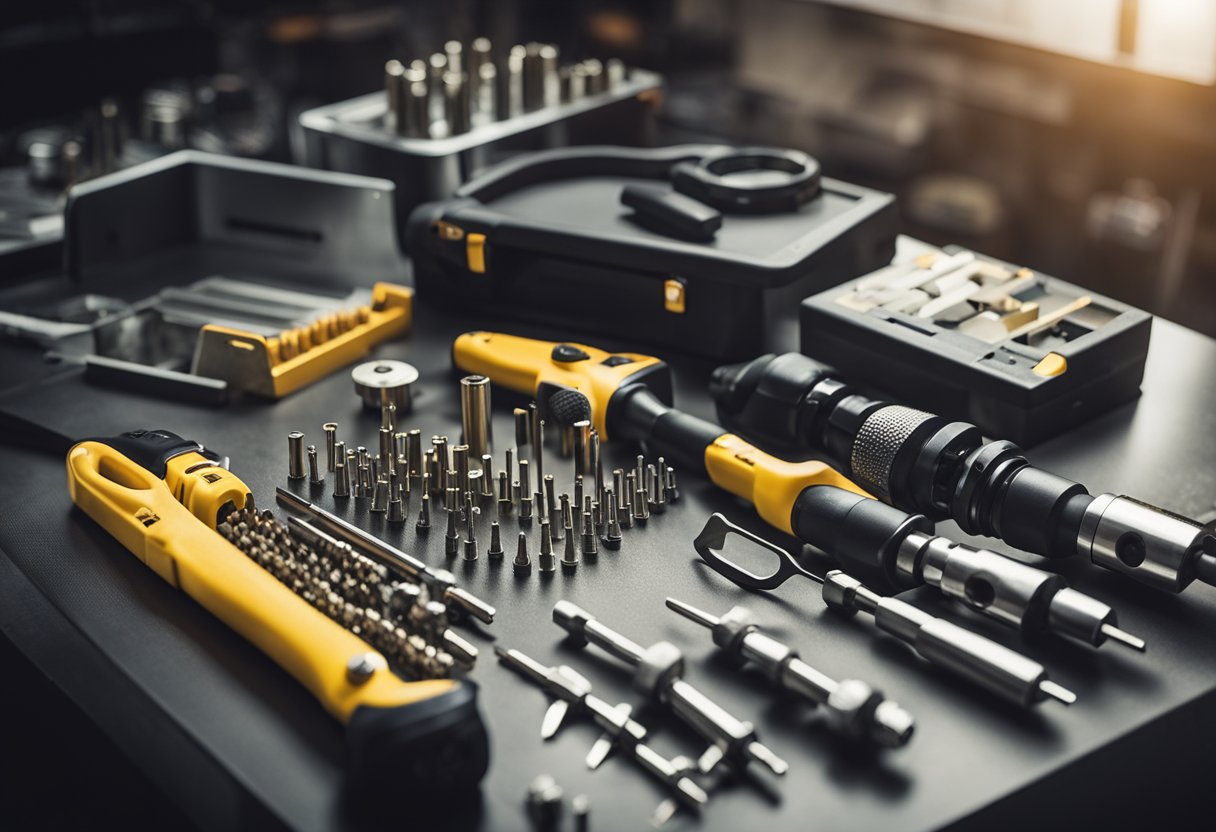
When it comes to sharpening drill bits, having the right tools is essential. Here are some of the tools that I use for sharpening drill bits:
Bench Grinder
A bench grinder is a tool that is used for shaping and sharpening metal. It consists of a motor that drives a grinding wheel. The grinding wheel is made of abrasive material, and it spins at high speed. A bench grinder is an excellent tool for sharpening drill bits because it can remove a lot of material quickly.
Grinding Wheel
The grinding wheel is the part of the bench grinder that actually does the grinding. It is made of abrasive material, such as aluminum oxide or silicon carbide. The grinding wheel comes in different sizes and shapes, depending on the type of work you are doing. For sharpening drill bits, a medium grit grinding wheel is ideal.
File
A file is a tool that is used for shaping and smoothing metal. It consists of a handle and a long, narrow piece of metal with teeth on one or both sides. A file is an excellent tool for sharpening drill bits because it can remove material in small amounts, allowing you to make precise adjustments to the angle and shape of the bit.
Other Tools
In addition to these tools, there are other tools that you may find useful for sharpening drill bits. For example, a drill bit gauge can help you determine the correct angle for sharpening your drill bits. A magnifying glass can help you see the details of your work more clearly. And a vise can help you hold your drill bits securely while you work on them.
In conclusion, having the right tools is essential for sharpening drill bits. A bench grinder, grinding wheel, file, and other tools can help you get the job done quickly and efficiently.
Drill Bit Angles
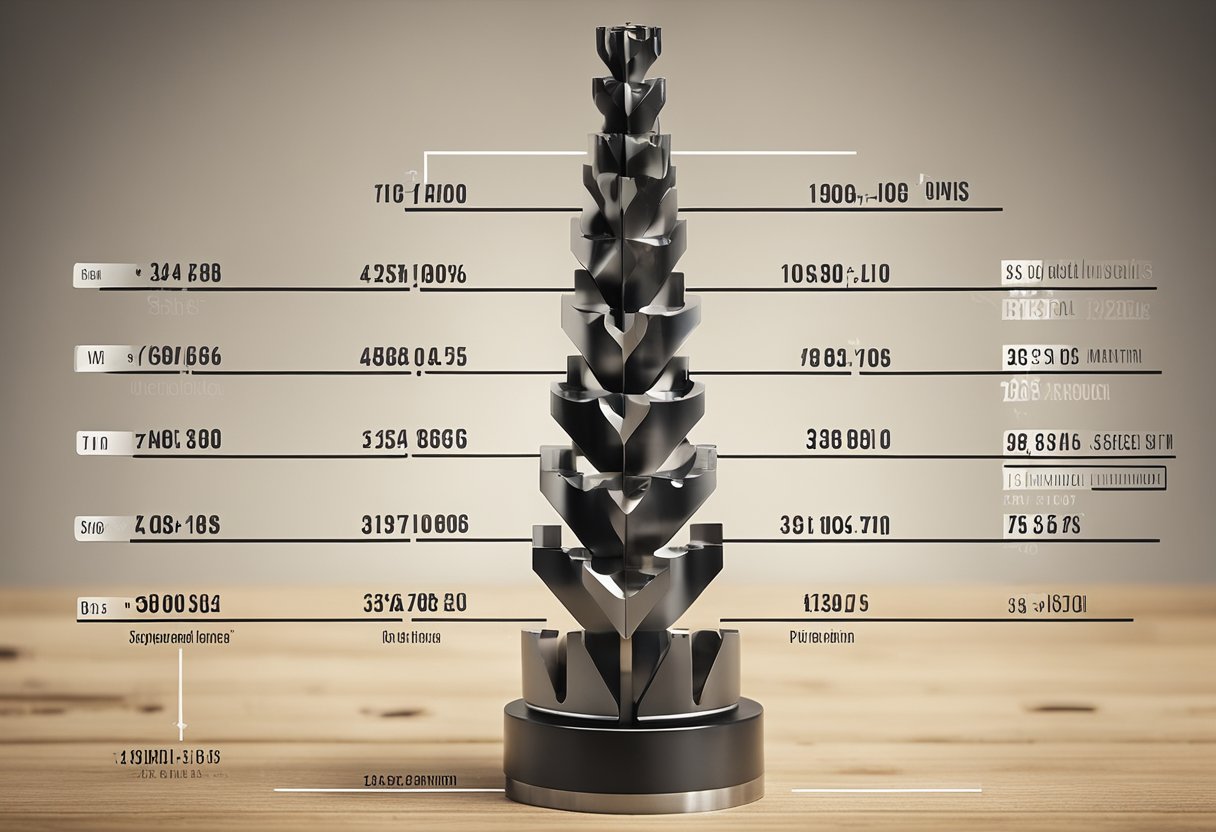
As someone who works with drill bits, I know that the angle of the drill bit affects how well it can cut through different materials and how long it will last before it needs to be sharpened. There are two primary angles to consider when sharpening drill bits: the point angle and the back angle.
The point angle is the angle between the two cutting edges of the drill bit. The most common point angles for drills are 118 degrees and 135 degrees. A point angle of 118 degrees is generally used for drilling into softer materials like wood, while a point angle of 135 degrees is better suited for drilling into harder materials like metal and masonry. However, it’s important to note that these angles are not set in stone and can vary depending on the specific application.
The back angle is the angle between the center axis of the drill bit and a line perpendicular to the drill bit’s axis. This angle is important because it affects the clearance angle, which is the angle between the cutting edge and the workpiece. The clearance angle needs to be large enough to allow the chip to flow out of the hole, but not so large that it weakens the cutting edge. A back angle of around 10 degrees is common for most drill bits, but this can vary depending on the specific application.
It’s also worth noting that some drill bits have a helical shape, which means that the cutting edges are at an angle to the center axis of the drill bit. This angle is known as the helix angle and is typically around 30 degrees. The helix angle helps to reduce the amount of force required to drill into a material and improves chip evacuation.
In summary, the angle of a drill bit is an important factor to consider when sharpening and using drill bits. The point angle and back angle both play a role in how well the drill bit can cut through different materials, while the helix angle can help to reduce the amount of force required to drill. By understanding these angles and how they affect drill bit performance, you can ensure that you are using the right drill bit for the job and getting the most out of your tools.
Sharpening Different Materials
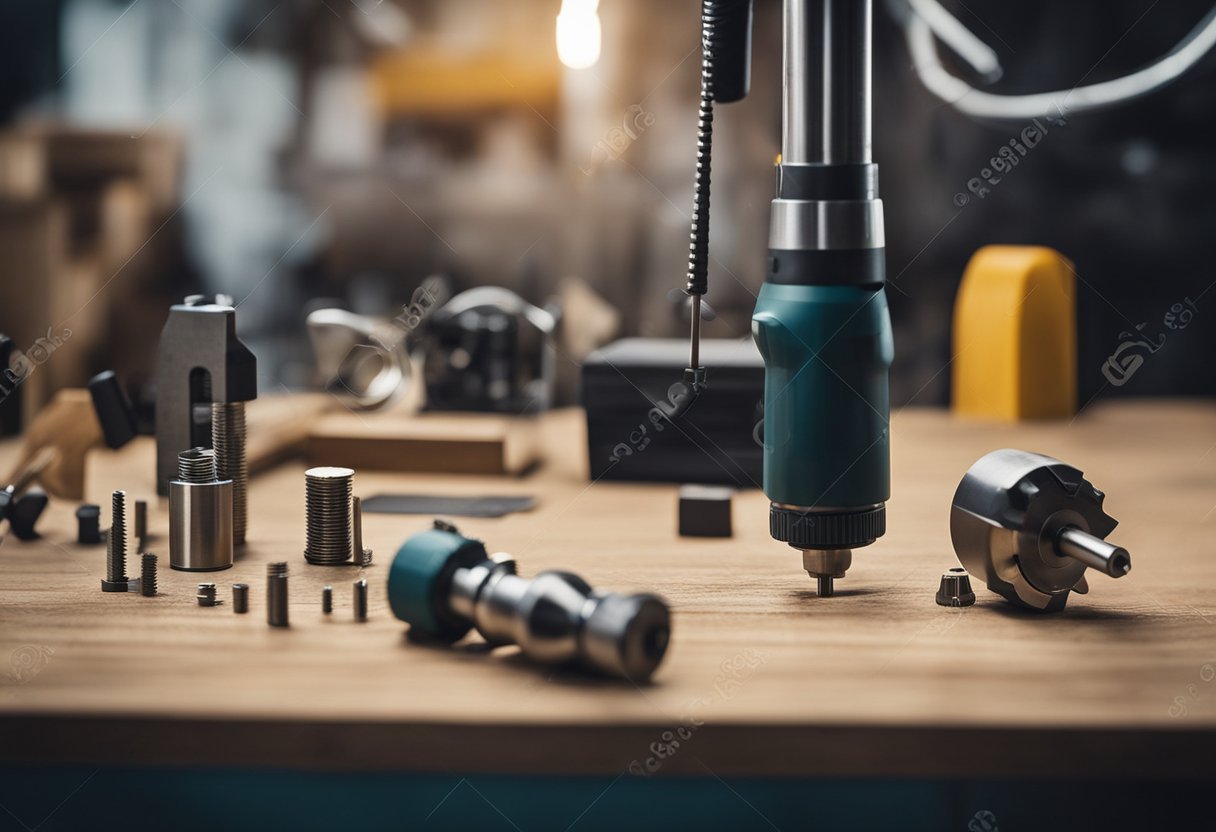
When it comes to drill bit sharpening, the angle of the bit is crucial to ensure optimal performance. Different materials require different angles for the best results.
Metal
For drilling through metal, a 135-degree angle is recommended. This angle is suitable for harder materials such as stainless steel, cast iron, and other metals. It is important to note that softer metals such as aluminum and brass may require a different angle.
Wood
When drilling through wood, a 118-degree angle is recommended. This angle is suitable for both softwood and hardwood. It is important to note that the type of wood being drilled may require a different angle.
Plastic
For drilling through plastic, a 150-degree angle is recommended. This angle is suitable for drilling in plastics and other similar materials that are prone to melting. It is important to note that thicker plastics may require a different angle.
Soft Metals
When drilling through soft metals such as copper or brass, a 90-degree angle is recommended. This angle is suitable for drilling in soft materials such as leather and rubber.
It is important to note that the above angles are general recommendations and may need to be adjusted based on the specific material being drilled and the type of drill bit being used. Additionally, it is important to ensure that the drill bit is sharp and in good condition before use to prevent damage to the material and the drill itself.
Testing the Sharpness
Once I have sharpened my drill bit, it’s important to test its sharpness before using it. To test the sharpness, I usually drill a test hole in a scrap piece of wood. If the drill bit is sharp, it should create a clean hole without any tear-out or splintering.
I also pay attention to the chips produced during drilling. If the chips are small and curly, it’s a good indication that the drill bit is sharp. On the other hand, if the chips are long and stringy, it’s a sign that the drill bit is dull and needs to be sharpened again.
Another way to test the sharpness of a drill bit is to pay attention to the speed of drilling. If the drill bit is sharp, it should drill through the material smoothly and quickly. However, if the drill bit is dull, it will take longer to drill through the material and may even overheat.
Overall, testing the sharpness of a drill bit is an important step to ensure the quality of your work. By following these simple steps, I can make sure that my drill bits are always sharp and ready to use.
Safety Precautions
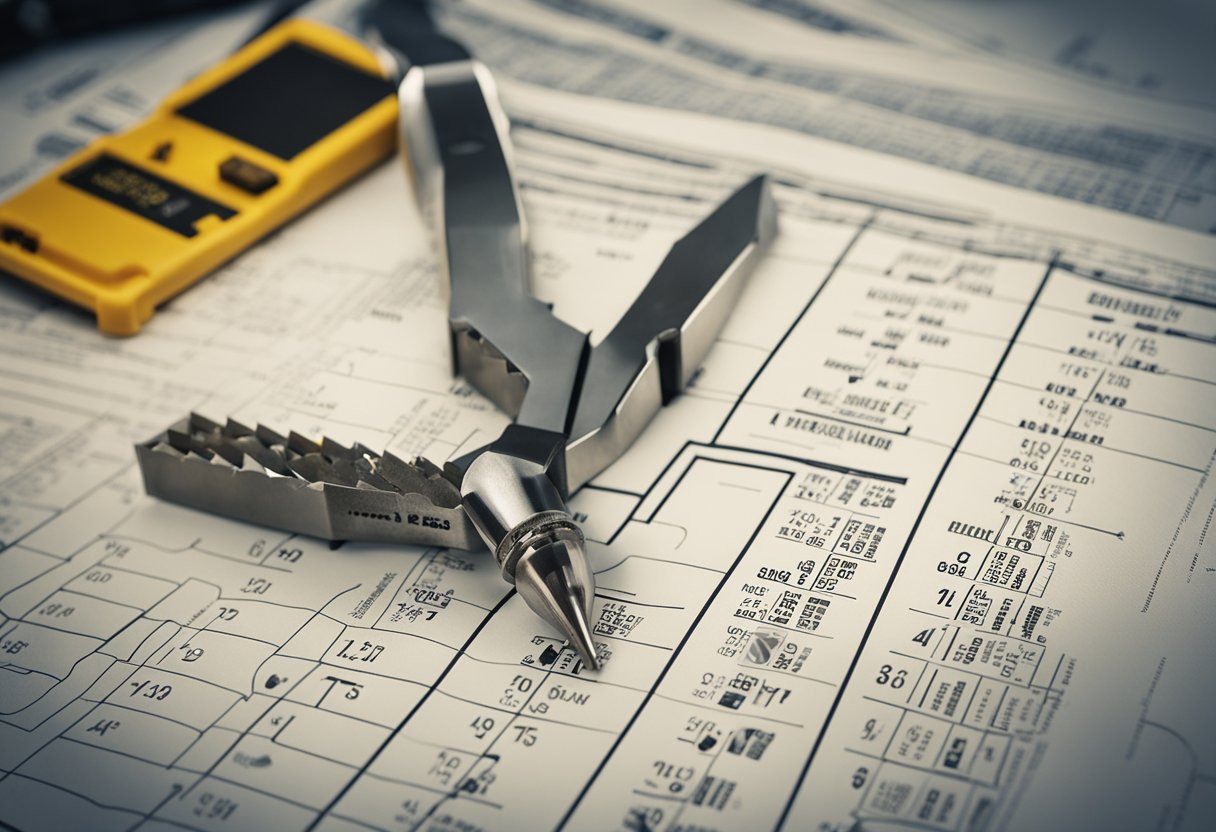
When sharpening drill bits, it is important to take appropriate safety precautions to prevent injury. Here are some safety tips to keep in mind:
Wear Protective Gear
Before you start sharpening your drill bits, make sure you are wearing the appropriate protective gear. This includes safety goggles to protect your eyes from flying debris and rubber gloves to protect your hands from the sharp edges of the drill bits.
Keep the Workspace Clean
When sharpening drill bits, it is important to keep your workspace clean and free of clutter. This will help prevent accidents and ensure that you can see what you are doing. Make sure to clean up any debris or metal shavings as you work.
Use a Secure Work Surface
When sharpening drill bits, it is important to use a secure work surface. This will help prevent the drill bit from slipping or moving while you are sharpening it. You can use a vise or clamp to hold the drill bit securely in place.
Be Mindful of the Sharpening Angle
When sharpening drill bits, it is important to be mindful of the sharpening angle. The angle will vary depending on the type of drill bit you are sharpening. Refer to the drill bit sharpening angle chart to determine the appropriate angle for your drill bit.
Take Breaks
Sharpening drill bits can be a time-consuming and repetitive task. It is important to take breaks to prevent fatigue and maintain focus. Take breaks every 20-30 minutes to stretch and rest your eyes.
By following these safety precautions, you can ensure that you sharpen your drill bits safely and effectively.
Frequently Asked Questions
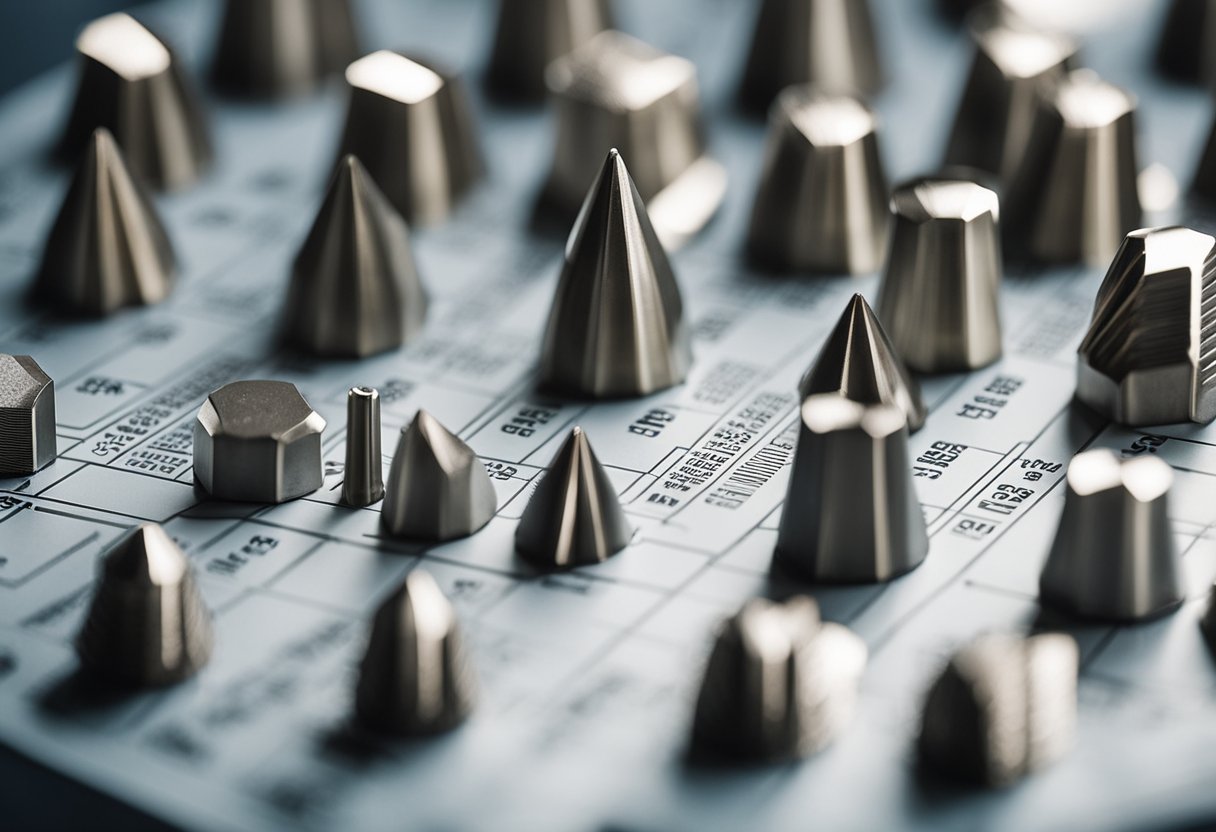
What is the standard tip angle for a drill bit?
The standard tip angle for a drill bit is 118 degrees. This angle is suitable for drilling into a variety of materials, including wood, metal, and plastic. However, it is essential to note that different materials require different tip angles for optimal performance.
Which is better 118 or 135 degree drill bits?
Both 118 and 135 degree drill bits have their advantages and disadvantages. 118 degree drill bits are more versatile and can handle a wider range of materials. On the other hand, 135 degree drill bits are more suitable for hard metals and produce less heat during drilling, which can extend the life of the bit.
What angle should a drill bit be sharpened at?
The angle at which a drill bit should be sharpened depends on the material being drilled. For example, wood and plastic require a sharper angle of 60-90 degrees, while metal requires a more obtuse angle of 135 degrees. Consult a drill bit angle chart to determine the correct angle for your specific application.
What is the best point angle for drilling aluminum?
The best point angle for drilling aluminum is 90 degrees. This angle provides the best balance between sharpness and durability, allowing the bit to cut through the material efficiently without dulling too quickly.
What is a drill bit sharpening jig?
A drill bit sharpening jig is a tool used to sharpen drill bits accurately and consistently. It holds the bit at the correct angle and provides a guide for the sharpening stone or file, ensuring that the bit is sharpened evenly on both sides.
What is a large drill bit sharpener?
A large drill bit sharpener is a tool designed to sharpen larger drill bits that are too big for standard sharpeners. These sharpeners typically use a grinding wheel to sharpen the bit and can handle bits up to 3 inches in diameter.

Hi, I’m Sal Muller of Tooltrip.com. My DIY experience led me to understand essential power tools for home projects. Tooltrip.com guides enthusiasts and professionals in choosing right tools for any job. I provide concise top tool reviews for easier, efficient DIY.

